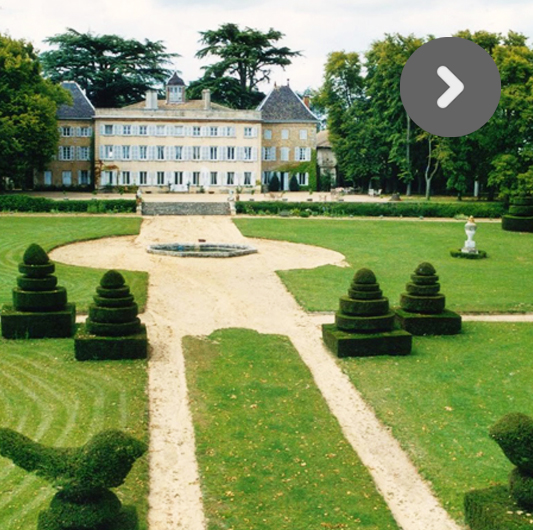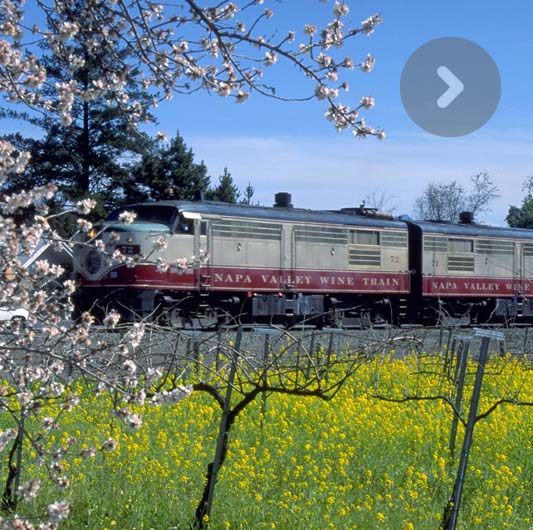Marlenheim
To the north-east of Strasbourg, la town of Marlenheim in Lower-Rhine marks the start of the wine route, which crosses some very pretty villages. Wine growing villages that fit together amidst vineyards to the north and the south of the Alsace region.
The Ecole des Vins. The Arthur Metz Ecole des Vins provides a good introduction before setting off to discover the wines of the Alsace region. It teaches you to spot different soils and appelations, to taste and savour the vintages. Sessions and workshops are tailored to individuals upon reservation. Visits of the cellar and tasting of the wines and crémants from the Arthur Metz estate. The highlight is his Roséal pinot gris with its salmon robe and aromas of boiled sweets; powerful and fresh. 102 rue du Général de Gaulle. Tel.: +33 3 88 59 90 60 www.alecoledesvins.fr
Traenheim
The cellar of King Dagobert. A cellar run as a cooperative with over 250 members over 20 villages and 95% of the wines from several estates that are vinified and blended here. Grands crus, organic wines and five estates produced separately following the advice of expert wine makers including the oenologist from the Strasbourg Hospices. The winery is an impressive sight and the vinification instruments are the most modern. The visit and tasting are very much in tune. We highly recommend this cellar. www.cave-dagobert.com
![]()
Auberge de Traenheim. A large bourgeois residence that dates from 1777. The dining room is decorated with frescoes painted in 1946 by Jean Cramer details the work carried out in the vineyards. Lydie and Claude Fuchs take care of the plates and showcase all the Alsace has to offer that is tasty and hearty: Flammenkuchen, pigs feet cromesquis, frogs legs or game presskopf… without forgetting the choucroute! 17 rue Principale. Tel.: +33 3 88 50 38 13 www.aubergedetraenheim.com
Dahlenheim
Pfister Estate
Mélanie, a young independent wine grower, also chairs « Des diVINes d’Alsace », an organisation that brings together about fifty female wine growers. Covered in diplomas, this agricultural engineer, with a diploma in oenology had a stint at the prestigious Cheval Blanc estate in Saint Emilion. Mélanie, a highly literate wine grower is the eighth of a whole generation of Pfister. The estate dates back to 1780 with ten hectares over nearly forty plots. Despite being in a very traditional wine growing environment, she has started a new generation of wines inspired from the Bordeaux region she knows so well. The Cuvée 8, a blend of four noble grape varieties, is a dry white strong in aromas and full of freshness. Her latest innovation, introducing glass tops to seal the flûtes, the name of the traditionally shaped bottles of Alsace wines. As a result, her wines appear even more precious and elegant and there is no risk of corked wine! Wines on the up. Visits by appointment. www.domaine-pfister.com www.divinesdalsace.com
Molsheim
The Chartreuse Museum. The Bugatti foundation, named after the luxury brand, has set itself up in the old charterhouse. The old convent buildings, the cloister and the cells have been restored and provide a setting for the town’s history and the Bugatti cars. Tel.: +33 3 88 49 59 38. www.musee-grande-chartreuse.fr
Rosheim
The town of Rosheim has done a great job maximising its roman heritage. A great initiative, which allows us to further discover:
The Roman house. A marvellous restoration and conversation project, this small three story house, a relic from the XIIth century, is a good guide to what family life and the activities of a well-heeled man would have resembled in the Middle-Ages. A reedited copy of the magnificent XIIth century manuscript “The Pleasure Garden” with its illuminations and images drawn at the Mont Saint Odile, can be found there. Visits: Tel.: +33 3 88 49 27 06
Saint Peter and Saint Paul Church. A treasure of Roman architecture completed in the XIIth century with rare yellow sandstone. The marks of artists can be seen in the detailed sculptures in the round, the frieze on the abbey church, the choir’s apse, the acroteria (sculptures of lions) and the statuaries of the monks disposed on the roof’s glaze. All of which are anchored in and illustrate the divide between good and evil, the material and the spiritual; concepts that are still valid today.

The Mont Sainte Odile
37 localities join the Mont Sainte Odile and the castle of Upper Koenigsbourg. This is the first territory to be granted the label “Vineyard and Discovery”. Originally from the IInd century BC, the pagan wall that greets pilgrims coming to visit the Mont Saint Odile has been updated. www.mont-sainte-odile.com
Boersch
Thought to date back from the year 545, this city is a gem of Renaissance architecture with, on its main square, the Puis à Six Seaux, the town hall and the half-timbered houses. www.boersch.net
Saint Léonard
Charles Spindler’s workshop. The famous wood inlayer artistically crafted precious furniture and pictures made from multiple pieces of tinted wood representing landscapes in the Alsace region. Works that are highly sought after by modern collectors. It is thanks to Jean-Charles, Spindler’s last descendant that the workshop lives on and continues to create more modern pieces. Workshop and Gallery at the Saint Leonard priory. Tel.: +33 3 88 95 80 17
Ottrott
This small town made a name for itself in the Middle-Ages for its “Ottrott Red”, a wine from pinot noir grapes. Ever since the XIth century, Benedectine monks coming from the Bourgogne would bring and plant pinot noir plants at Ottrott on the Steinberg Hill. The lay-sandstone soil, conducive to the growth of this variety produces a tannic and woody red wine, with aromas of dark cherries, very tasty. A small 25 hectare vineyard but a great red wine.
Vonville Estate. The Vonville Jean-Charles estate has existed since 1830 and was taken over in 2002 by the new generation of sons of the Vonville family. The vinification of the Red of Ottrott continues to follow traditional methods nonetheless. 35 hectares, 8 of which are reserved to the pinot noir. The three blends following the traditional method are aged in oak barrels. The 2007 and 2009 Stéphane blends feature in the Guide Hachette for their typicity and quality. Tel.: 03 88 95 80 25 www.vins-vonville.com
Windeck estate. The park cover an old seigneury knows as “Windeck”, with 11 hectares of magnificent trees, sequoias, Japanese larch, Virginia tulip trees, Chinese bamboo tress… A voyage in the plant world. 51 rue Principale. Tel.: + 33 3 88 48 14 00
![]()
L’Ami Fritz.A house in the typical style of the Alsace dating from the XVIIIth century with a Winstub and a Kaminstub. Patrick Fritz was awarded the Prize of Inn of the Year by Gilles Pudlowski in 2011. A great food critic from the Alsace region, we trust Pudlowski’s judgement in these matters. Ottrott le Haut. Tel.: +33 3 88 95 80 81.
Mittelbergheim
Classified one of the most beautiful villages in France, you’ll no doubt enjoy its town hall, lined on either side with houses in the pure Renaissance style, the old wine-press and the blooms. Everything is there to please the visitor and encourage him to make a stop.
Gilg wine estate. UAn estate and a great wine making family. The Gils arrived from Austria in 1601 and are now in their 16th generation. Polyculture, viticulture and cooperage with just over one hectare of vines in 1947, Jean-Pierre, Christian, Nelly et Armand take over and focus exclusively on viticulture with almost 28 hectares today. The vineyards are planted in part over the Grand Crus areas of Zotzenberg and Moenchberg. Production encompasses all the varieties from the Alsace region. Their Sylvaner Zotzenberg Grand Cru is quoted as reference, an exception also in the acceptation of the appellation. The beautiful cellars can be visited, a 1200 metre long underground course, the oldest cellar dating back to 1572, culminating in a tasting in the vault. www.domaine-gilg.com
![]()
Hôtel Restaurant Gilg. The Rhine style house built in 1614 holds a hotel and a restaurant. Chef Vincent Reuschle serves a traditional yet creative and very tasty menu in the rustic and comfortable dining room. Choosing between the fresh liver escalope with caramelised apples and the duck breast with chopped pineapple; the chilled lobster soup or the warm wine grower’s hot puff pastry dish, is a difficult one to make. It is all delicious. Tel.: +33 3 88 08 91 37 www.hotel-gilg.com










